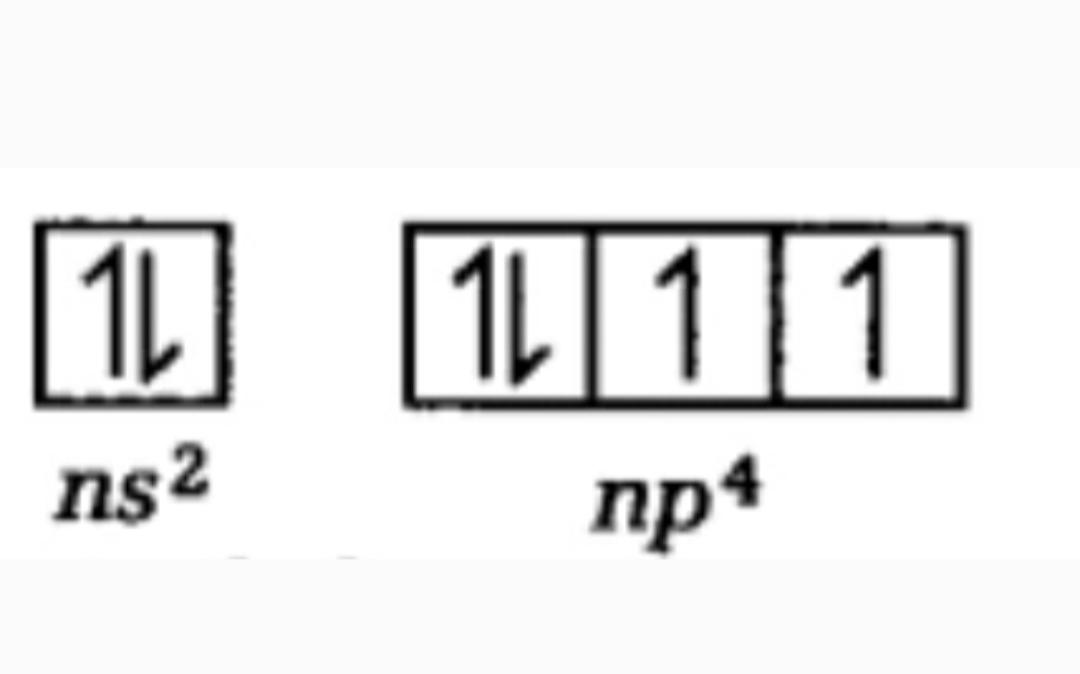
The number of unpaired electrons in the p-subshell of VI A or $n{{s}^{2}}n{{p}^{4}}$ ${{16}^{th}}$ group of the periodic table is :
A. 1
B. 2
C. 3
D. 4
Answer
220.2k+ views
Hint: The general electronic configuration of the ${{16}^{th}}$ group element is $n{{s}^{2}}n{{p}^{4}}$. By drawing the electronic configuration diagram and filling up the respective number of electrons in the s and p subshell by using Hund’s Rule, Aufbau principle etc. . We can count the number of unpaired electrons in the p – subshell.
Complete Step by Step Answer:
In atomic physics and quantum chemistry, the electronic configuration is the distribution of electrons of an atom or molecule in atomic or molecular orbitals. To calculate an electronic configuration , divide the periodic table into sections to represent the atomic orbitals, the regions where electrons are contained.
An S-block can hold a maximum of two electrons in it . In p-block a maximum of 6 electrons can be placed. Similarly in d- block maximum of 10 electrons can be placed . Now we has been provided with the group number of the element as group 16 , and so in its outer valence orbitals there would be 6 electrons in it. Therefore , the electronic configuration can be written as $n{{s}^{2}}n{{p}^{4}}$ as the sum of electrons in this valence orbitals will be calculated 2+4=6. Now, representing the electronic configuration of this group we have,

Thus, the number of unpaired electrons in the p subshell is 2.
And thus , the correct answer is option B.
Note: While representing the electrons in the p subshell the rules for electronic configuration representation should be taken in care as sometimes , students represent four electrons of p- subshell as 2 electron pairs but it will not be considered as correct as Hund’s rule and Aufbau principle are violated in this case. So firstly all the boxes need to be half –filled after that fully filling it.
Complete Step by Step Answer:
In atomic physics and quantum chemistry, the electronic configuration is the distribution of electrons of an atom or molecule in atomic or molecular orbitals. To calculate an electronic configuration , divide the periodic table into sections to represent the atomic orbitals, the regions where electrons are contained.
An S-block can hold a maximum of two electrons in it . In p-block a maximum of 6 electrons can be placed. Similarly in d- block maximum of 10 electrons can be placed . Now we has been provided with the group number of the element as group 16 , and so in its outer valence orbitals there would be 6 electrons in it. Therefore , the electronic configuration can be written as $n{{s}^{2}}n{{p}^{4}}$ as the sum of electrons in this valence orbitals will be calculated 2+4=6. Now, representing the electronic configuration of this group we have,

Thus, the number of unpaired electrons in the p subshell is 2.
And thus , the correct answer is option B.
Note: While representing the electrons in the p subshell the rules for electronic configuration representation should be taken in care as sometimes , students represent four electrons of p- subshell as 2 electron pairs but it will not be considered as correct as Hund’s rule and Aufbau principle are violated in this case. So firstly all the boxes need to be half –filled after that fully filling it.
Recently Updated Pages
Electricity and Magnetism Explained: Key Concepts & Applications

JEE Energetics Important Concepts and Tips for Exam Preparation

JEE Isolation, Preparation and Properties of Non-metals Important Concepts and Tips for Exam Preparation

JEE Main 2021 July 25 Shift 1 Question Paper with Answer Key

JEE Main 2021 July 22 Shift 2 Question Paper with Answer Key

States of Matter Chapter For JEE Main Chemistry

Trending doubts
JEE Main 2026: Application Form Open, Exam Dates, Syllabus, Eligibility & Question Papers

Derivation of Equation of Trajectory Explained for Students

Hybridisation in Chemistry – Concept, Types & Applications

Understanding the Angle of Deviation in a Prism

How to Convert a Galvanometer into an Ammeter or Voltmeter

JEE Main Marking Scheme 2026- Paper-Wise Marks Distribution and Negative Marking Details

Other Pages
NCERT Solutions For Class 11 Chemistry Chapter 7 Redox Reaction

JEE Advanced Marks vs Ranks 2025: Understanding Category-wise Qualifying Marks and Previous Year Cut-offs

Hydrocarbons Class 11 Chemistry Chapter 9 CBSE Notes - 2025-26

Thermodynamics Class 11 Chemistry Chapter 5 CBSE Notes - 2025-26

NCERT Solutions ForClass 11 Chemistry Chapter Chapter 5 Thermodynamics

Equilibrium Class 11 Chemistry Chapter 6 CBSE Notes - 2025-26




